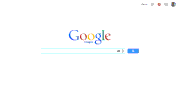Death of the Stock Photo
Or at least the ridiculously overpriced ones. You know as well as we do: a good article is only as good as the photos used to illustrate it. That’s why finding attractive, interesting and captivating photos (that don’t require taking out a second mortgage on your home) is a huge part of any effective website or content marketing strategy. This is no surprise when you consider the fact that 90 percent of the information transmitted in the brain is visual. Not to mention that 40 percent of people respond better to images than to plain text. Stats like these make it no mystery why images are getting larger on the web.
Take a hint from Facebook
Let’s take Facebook for instance; in 2013, the social media magnate rolled out new, larger images for link shares and ads. This made the content more appealing to viewers and, in turn, resulted in bigger click-through numbers, likes, comments and general engagement for those images. Since then, other platforms and websites have followed suit. Let’s talk a little more about the optimal image size.
Image Sizes
That said, choosing images sizes can be a tricky game. Full size photos can result in slower loading speeds, and users usually don’t need a full-size photo. A good rule of thumb would be to upload a photograph in the size you actually want to display. If you’d like your photo to be displayed at 600 px, then resize your photo to 600 px. This allows your user to see the shot the way you intended — as soon as it’s loaded onto your page. And all without sacrificing loading time.
Where do you get images?
There are a few different ways to get great images for your site. Some methods are better than other. Kinda just comes down to your company’s particular needs. Read on to learn more.
Credit-based services
Credit-based services, like Shutterstock, iStockPhoto and Getty Images offer you a certain number of credits (redeemable for image downloads) in exchange for a monthly or yearly payment. For instance, you might pay $199 per month for a credit-based image service, which may give you a total of 20 image downloads each day.

Usually, these credits do not roll over, so if you don’t use your 20 images one day, you’ll lose them. Also, 20 images a day (or thereabouts) is a higher volume than many small businesses require and can be wasteful. We at NeONBRAND use and (highly recommend) an alternative method for accessing high quality images.
Subscription-based services
Other services offer subscriptions for image downloads. A subscription plan, like those offered by our personal favorite, Unsplash, requires users to pay a low subscription fee in exchange for a number of image downloads that transfers from month to month. These images are a dollar-a-pop. And they’re pretty impressive. For example, take a gander at the pictures below. Two of them cost one dollar. The other three are the more expensive ones we purchased before finding Dollar Photo Club. Can you tell which is which?

Of course you can’t! Because I lied. They’re all from Dollar Photo Club and all cost a dollar. Muah-ha-ha…
The free stuff
Of course, free is a pretty competitive price, and you might be tempted to grab some “free” images online. But that tactic may not be as smart as you think. Free photo services come with a few risks — risks you may not want to play with. These include:
- Licensing issues. Is that “free” photo really free? It may not be. The internet is crawling with images that are protected by intellectual property laws. If you choose the wrong one, you may open yourself (and your business) up to a lawsuit — or at least a cease and desist notice.
- Popularity. Free is a pretty popular price. That’s good for your wallet, but not great for making your business and your website unique. If you found the free image, chances are, a whole lot of other businesses have too. And your smiley blonde family may be gracing a dozen other websites.
- Poor selection. When you’re limited to the free stuff, you have to deal with what you get. That means it’s a whole lot harder to find that perfect shot — and you’ll likely wind up settling for a “just okay” shot. Not exactly the stuff of great websites.
Not all free services are created equal, and we definitely have our favorites, one of which is Unsplash. It’s as free as a bird and full of some incredibly beautiful photos. Have fun wasting 10 minutes scrolling through.
Google Images can work too, but you’ve got to be careful what setting you’re using. And they’re a little buried, so allow us to show you where they are using this gif we made:

Sure, images may say a thousand words – but they also may be saying what everyone else is. So when it comes to your digital images, it’s time to take stock.

